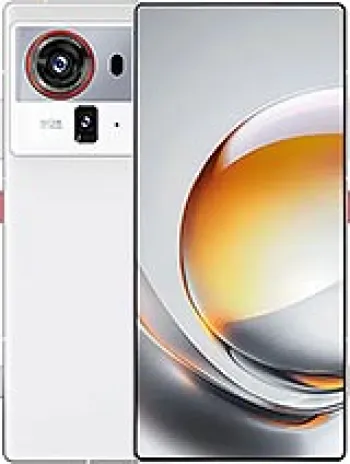
Introduction to the ZTE F870
The ZTE F870, introduced in 2009, emerged as a notable device in the realm of feature phones. Bringing a certain level of practicality and design, it catered to users who primarily required basic functionalities intertwined with some advanced features for its era. Its cessation in production has left it as a memory of the evolving mobile technology landscape.
Design and Build
The design of the ZTE F870 reflects a polished approach to functionality. With dimensions of 108 x 55.5 x 12.6 mm and weighing 100 grams, the device was compact and lightweight, making it easy to carry and handle. The phone's body was available in different colors including black, red, and brown, offering some variety in terms of aesthetic preference. Its build incorporated a Mini-SIM slot, which was standard at the time.
Display
Equipped with a 3.2-inch TFT resistive touchscreen, the ZTE F870 provided a resolution of 240 x 400 pixels (~146 ppi density). The screen-to-body ratio was 48.6%, which was quite typical for feature phones in that period. The touchscreen was resistive, an older technology compared to the capacitive touchscreens widely used today, requiring a firmer touch.
Camera Capabilities
Despite being a feature phone, the ZTE F870 came with a 5 MP main camera, which was considered reasonable for capturing basic images and video. The presence of a front camera allowed for video calls, an attractive capability at that time. However, without modern features such as autofocus or flash, the camera was limited in low-light conditions or in capturing fast-moving subjects.
Network and Connectivity
The ZTE F870 supported GSM and HSPA technology, allowing it to operate on 2G and 3G networks across various frequency bands (GSM 850/900/1800/1900 and HSDPA 850/2100). The HSPA capability allowed for a modest data speed of 3.6/0.384 Mbps. For local connections, Bluetooth 2.1 with A2DP was available, though WLAN support was absent, limiting wireless internet connectivity to cellular networks only. USB 2.0 support was included for data transfer and charging.
Battery Life
The phone was powered by a removable Li-Ion 1250 mAh battery. This capacity was standard for feature phones, offering satisfactory performance for the day-to-day functionality that did not heavily tax the battery through power-draining tasks. Users appreciated the removable battery, providing the convenience of swapping batteries if needed.
Memory and Storage Options
The ZTE F870 offered storage expandability via a dedicated microSDHC slot. Though internal storage might be limited, this feature allowed users to increase storage for media and apps. The phonebook supported photo identification for contacts and call records. The presence of these features enhanced the phone’s utility as a reliable communication tool.
Operating System and Usability
Operating as a feature phone, it provided a straightforward user experience without the complexity of modern operating systems. Features such as SMS, MMS, and email catered to various communication needs. It also supported WAP 2.0/xHTML browsing, albeit with limitations compared to modern browsers. Java MIDP 2.0 support allowed users to download and install compatible applications and games.
Entertainment and Additional Features
Entertainment options included a stereo FM radio with RDS, a treasure for users who preferred real-time broadcasts without relying on internet streaming. The device also featured an accelerometer, enhancing user interaction with motion-based applications and games. Although limited by today's standards, these features enriched the user's multimedia experience on the device.
Conclusion
The ZTE F870 stood out as a versatile choice in the feature phone category during its time. It offered a balanced mixture of essential communication features, modest multimedia capabilities, and practical functionality. For those revisiting the technology of that era, the F870 serves as a charming reminder of the bridges between basic and smartphone functionalities.
ZTE F870 Key Features
- Supports GSM and HSPA technology for connectivity.
- Compact dimensions with a light weight of 100 g.
- 3.2-inch TFT resistive touchscreen with 65K colors.
- Expandable storage through a microSDHC card slot.
- 5 MP main camera for photography.
- Incorporates an accelerometer sensor.
- Equipped with Bluetooth 2.1 with A2DP support.
- Includes a stereo FM radio with RDS.
- Removable Li-Ion 1250 mAh battery for power.
- Available in multiple colors: Black, Red, and Brown.
Drawbacks of ZTE F870
- Supports only GSM and HSPA technologies; lacks support for 4G and 5G networks.
- Resistive touchscreen technology might result in less responsive touch inputs compared to capacitive screens.
- Low screen resolution (240 x 400 pixels) with a modest pixel density (~146 ppi), which may affect display clarity and sharpness.
- No Wi-Fi capability, limiting wireless internet access to mobile data only.
- Absence of GPS functionality poses challenges for location-based services.
- Does not include a 3.5mm headphone jack, potentially requiring adapters for audio outputs.
- Limited to Bluetooth version 2.1, lacking newer Bluetooth standards for better connectivity and features.
- The device has been discontinued, leading to potential difficulties in finding support or replacement parts.

View Also
More Phones
All Rights Reserved +14266 Phones © Mobilawy 2025

























